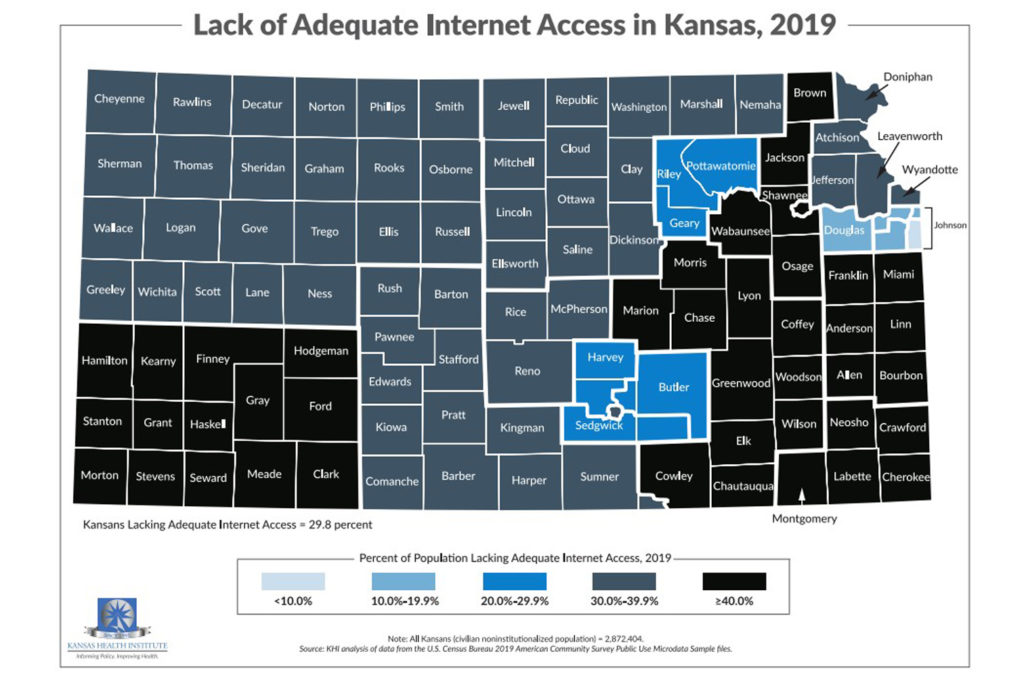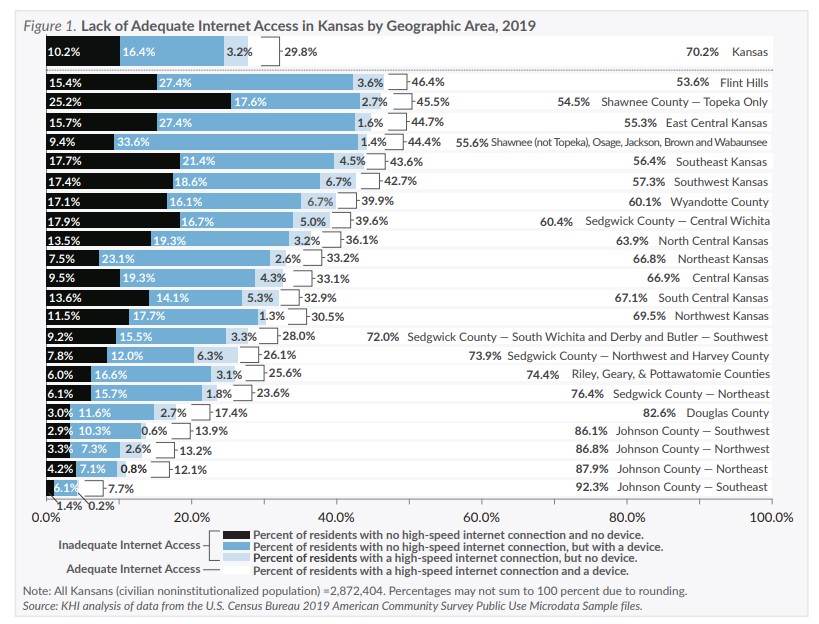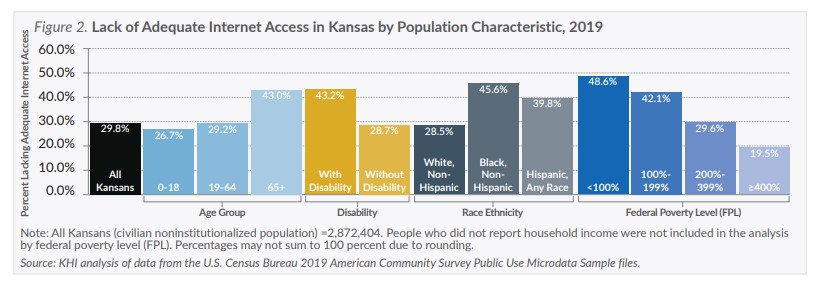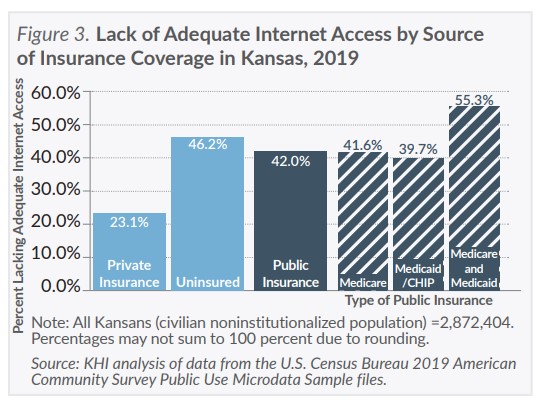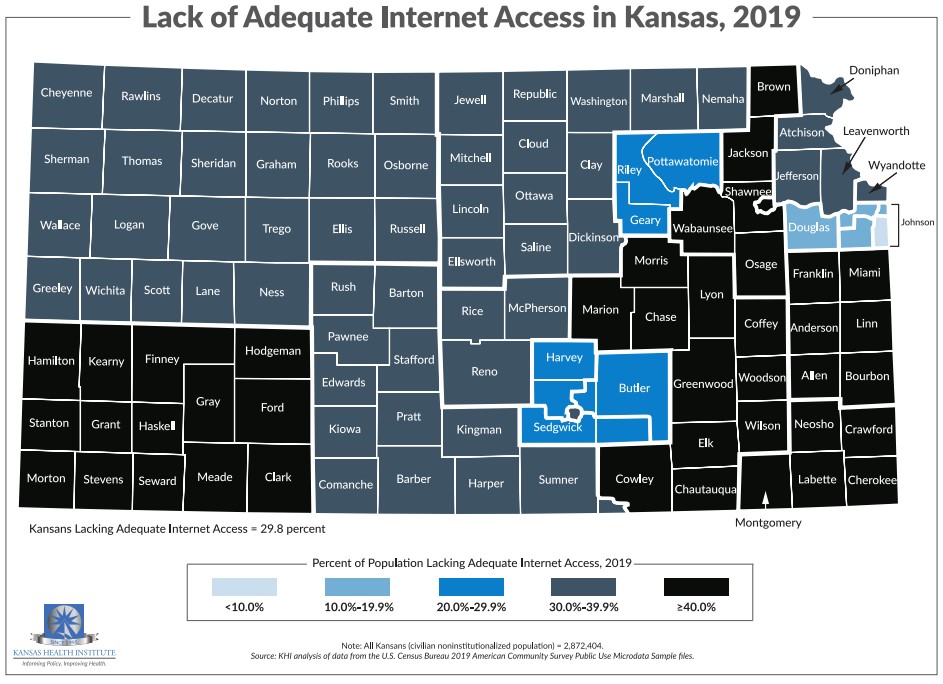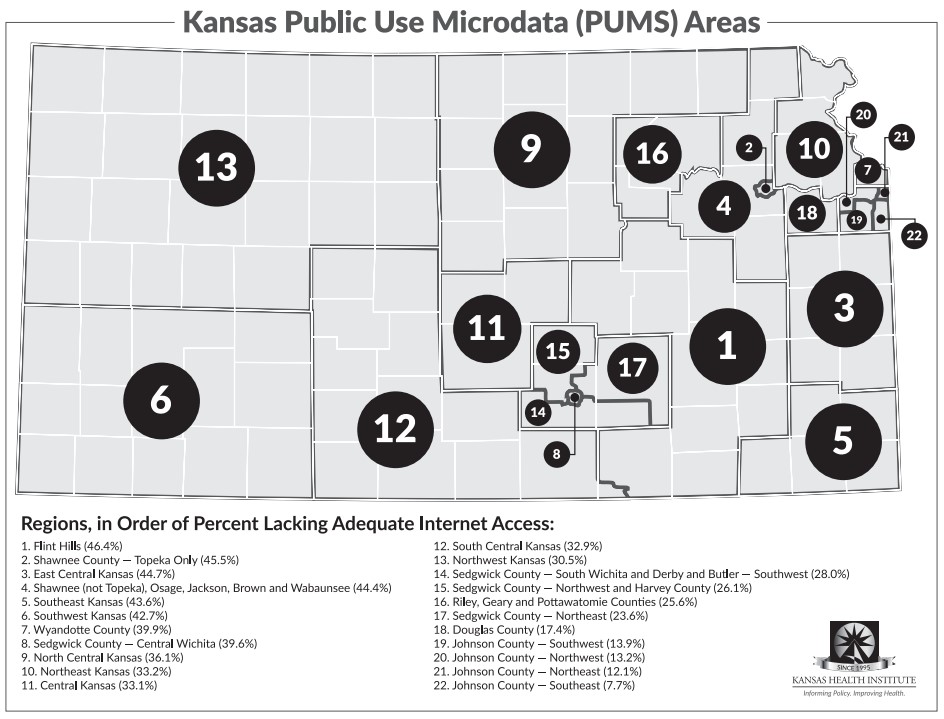Insurance Coverage
As seen in Figure 3, uninsured Kansans and those with public health insurance (including Medicare, Medicaid or Children’s Health Insurance Program (CHIP)) were more likely to lack adequate internet access than those with private insurance (including employment-based or direct-purchase coverage) (46.2 percent, 42.0 percent and 23.1 percent, respectively). Individuals with public insurance and those that are uninsured generally have limited income, making it harder for them to afford devices and a high-speed internet connection. Among Kansans with public insurance, those who were dually eligible for both Medicare and Medicaid were the most likely to lack adequate internet access (55.3 percent). Dual-eligible Kansans are either nonelderly adults with disabilities or seniors with low income who could potentially benefit from internet enabled telehealth services.
Policy Implications
The COVID-19 pandemic highlighted the detrimental effects of inadequate internet access and the large variations present across regions of the state and various demographic groups of Kansans.
Health
The COVID-19 pandemic highlighted the detrimental effects of inadequate internet access and the large variations present across regions of the state and various demographic groups of Kansans.
In responding to the COVID-19 pandemic, insurance plans made changes to telehealth policies and the federal and state governments made changes to telehealth laws. These changes allowed payment parity, expanded services, telephone delivery (instead of only video), and new originating sites. While many of these changes were enacted to expand care during the COVID-19 pandemic, many could be continued after the pandemic ends. Adequate internet access is essential to allow people to obtain telehealth services in a timely manner and to improve their care.
Specifically, for older adults and people with disabilities, the COVID-19 pandemic may have disrupted social services and long-term services and supports, due to challenges in converting in-person or in-home services to telehealth services. It is important to note that older adults and people with disabilities also may need appropriate and adapted devices — such as those with large font sizes and voice activated features — to be able to appropriately access the internet. Many of them live alone or have limited mobility, and adequate internet access could be an option to help them have more frequent interactions with family and friends in order to avoid social isolation during the pandemic.
Education
To slow the spread of the virus, Gov. Kelly closed school buildings early last spring. School districts across the state switched to a virtual platform to educate children and to coordinate delivery of important health and social services, such as annual vision and hearing screenings and subsidized meals. To receive education and services in a virtual format and keep connections with peers and teachers, which is important for maintaining good emotional health, students need adequate internet access, including an appropriate device and a high-speed internet connection.
However, one in four (26.7 percent) Kansas children lacked adequate internet access in 2019. Many live in areas without a high-speed internet connection and not all schools across the state are able to provide students with the devices needed for virtual learning. Policymakers should consider improvements that would allow all children to have adequate internet access, regardless of geographic location, family income, or other factors.
Looking Ahead
During 2020, several initiatives were put in place to improve and expand broadband access in Kansas. The Office of Broadband Development was established within the Department of Commerce to provide support for broadband expansion. The new Eisenhower Legacy Transportation Program authorized grants of up to $5 million a year for the first three years, then up to $10 million a year through 2030, for construction projects that expand and improve broadband service in Kansas. The federal Coronavirus Aid, Relief and Economic Security (CARES) Act provided $60 million in federal funding to support connectivity initiatives.
Improving health outcomes and educational opportunities are key priorities for the state. Adequate internet access could help achieve these goals. Nevertheless, disparities exist across Kansas based on age, race/ethnicity, income, insurance coverage and geographic area. As Kansas invests in long-term solutions to improve internet access, it is important for policymakers to consider how to reduce disparities that currently exist.
